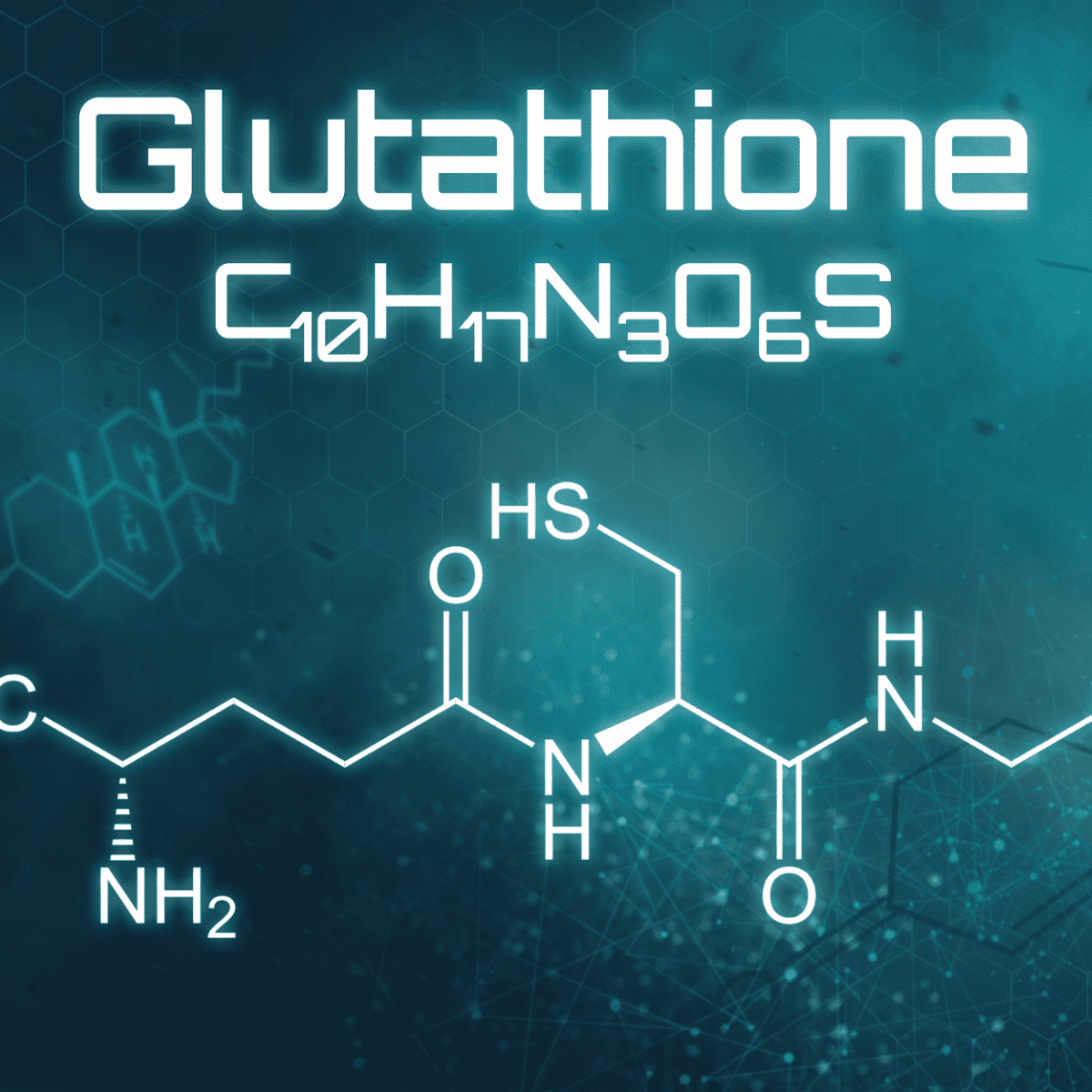

Antioxidants play a crucial role in protecting our cells from damage. That includes the cells responsible for healthy bone remodeling.
Today we’ll take a closer look at the Master Antioxidant known as glutathione. As the impressive title suggests, glutathione is a uniquely powerful antioxidant.
The studies we will review have shown that it also offers special benefits for building and maintaining strong and healthy bones. You will learn how to increase your glutathione levels and why it is so important to prevent breakages.
Glutathione was first accurately described in 1935, but it wasn’t until the 1980s that research into the molecule’s function began to reveal its incredible abilities. At the molecular level, glutathione is a tripeptide, meaning it is composed of three amino acids – glutamate, cysteine and glycine – linked by peptide bonds.
These components combine to form a unique molecule that helps maintain cellular homeostasis or balance. It supports cell homeostasis largely by protecting against oxidative damage. This protective property makes glutathione exceptionally powerful.
Many diseases and conditions are associated with decreased glutathione levels, including Alzheimer’s disease, cancer, chronic liver disease, cognitive disorders, diabetes, Parkinson’s disease, bone loss and more.1
Since glutathione protects cells throughout the body, it makes sense that a deficiency could be linked to several health problems.
Short content
Glutathione is a molecule consisting of three amino acids: glutamate, cysteine and glycine. Combined, they form a molecule that helps maintain cell homeostasis throughout the body. Low glutathione levels have been linked to a wide variety of diseases and conditions.
Maintaining optimal glutathione levels is essential for good health. Fortunately, every cell has the ability to produce glutathione in a cellular fluid called cytosol, provided it has access to the required precursor amino acids: glutamic acid (glutamate), cysteine and glycine.
The process occurs in two steps and requires special enzymes to complete. Glutathione is then pumped into the mitochondria, the organelles that create the energy that fuels every cell in our body. Glutathione protects the mitochondria against oxidative damage caused by radical oxygen species.
Your body naturally knows how much glutathione is needed to ward off oxidative damage to your cells. But certain obstacles may prevent her from achieving that production.
Without the building blocks of glutathione and the enzymes that enable its production, your body cannot maintain healthy levels of this powerful antioxidant.
Short content
Glutathione, synthesized from its constituent amino acids in a cellular fluid known as cytosol, is then transported to the mitochondria, the energy-producing organelles of the cell. Glutathione protects the mitochondria against oxidative damage.
In order for our cells to function optimally and prevent oxidative damage, it is imperative to ensure an ample supply of glutathione in our body. The antioxidant effect directly benefits the health and quality of our bones and our bone remodeling process.
Recent research indicates that glutathione plays an even broader role by maintaining a balanced relationship between osteoclasts and osteoblast cells responsible for bone resorption and formation respectively – mainly by inhibiting osteoclast production. This action naturally increases bone mass.2
These strategies can help us maintain healthy levels of the Master Antioxidant.
Short content
Keep glutathione levels high to protect your bone remodeling process. See the list of strategies above, which includes dietary changes, supplements, sleep quality, and regular exercise.
You have the ability to equip your body with the essentials to protect itself from oxidative damage. Every cell in your body is ready and able to produce the Master Antioxidant if you provide the right materials and conditions.
For tips on incorporating foods rich in sulfur, selenium, vitamin C and glutathione into your diet, try Bone Appétit, the Save Institute’s pH-balanced cookbook and meal planner. For help building a regular exercise routine you love, try SaveTrainer, the Save Institute’s online video training platform.
You’re not the only one making healthy changes to improve your health. Find the support you need, in whatever form it takes, and celebrate that you have the wisdom to use the resources available to you!
1 https://www.ncbi.nlm.nih.gov/pmc/articles/PMC6770193/
2 https://www.sciencedirect.com/science/article/pii/S0753332220304972
3 https://www.ncbi.nlm.nih.gov/pubmed/12499341
4 https://pubmed.ncbi.nlm.nih.gov/29484396/
5 https://pubmed.ncbi.nlm.nih.gov/2353930/
6 https://www.ncbi.nlm.nih.gov/pubmed/25945148
7 https://pubmed.ncbi.nlm.nih.gov/17925621/
Introduction If you're an athlete or someone who leads an active lifestyle, you've likely heard…
Key Takeaways Regular exercise and maintaining a healthy weight are crucial for knee health Proper…
Ever finished a run and felt your knee throbbing? You're not alone. Many athletes face…
https://youtu.be/YRrppL1WuCw Introduction As a weight lifter, you're no stranger to pushing your body to its…
Ever wondered why some hikers seem to move easily on tough trails while others find…
Are you an active person dealing with knee pain that stops you from doing what…
View Comments